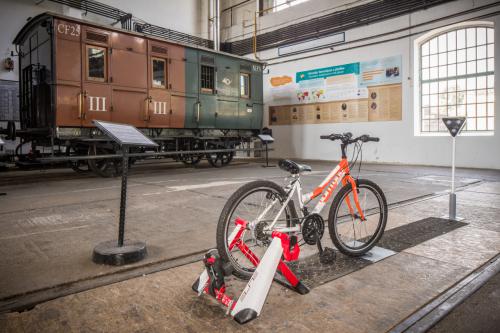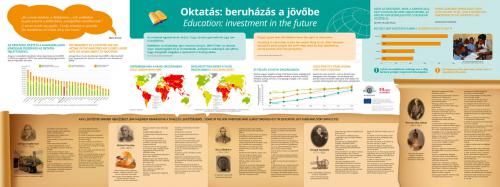How to do it step by step
1st Step:
Choosing the topic and the installations that fit the purpose
We were looking for a topic that fits the profile of the Museum and the MDGs. Since we wanted to emphasize the importance of education, we searched for famous inventors who had contributed to the development of the railway in some way. In addition, they all had one thing in common: they faced serious difficulties and struggled during their school years. We also designed an exhibition board and an interactive installation that shows visitors famous inventions in use. More specifically, it is a bicycle that, with the help of a dynamo, activates the lights at a railway level crossing.
2nd Step:
Collecting materials
Using the Museum’s own library with the help of professional museologists and using the internet for biographical information, we searched for world-famous inventors whose inventions are connected to railways in some way. From the initial selection, we finally chose those who had struggled during their school years, possibly due to their social background or to an illness. We also collected data on current educational difficulties in so-called developing countries and the correlation between education systems and economic development in developed countries.
3rd Step:
Preparing the plan
In conjunction with some colleagues, we chose the five famous inventors that we wanted to present and produced short extracts from their biographies. Furthermore, we collected facts and figures on the topic of worldwide education.
4th Step:
Finding a graphic designer and a printer
After receiving bids from different graphic designers, we made our decision. We then involved him in the process of planning the exhibition board.
5th Step:
Designing and manufacturing the interactive tool
It took us some time to identify an enjoyable interactive element for this installation. One of our colleagues fabricated a bicycle that is connected to a dynamo. Through pedalling the bicycle, the dynamo generates electric power that, in turn, switches on a railway traffic light.
6th Step:
Printing production
After finalizing the graphic design, we sent it to a printing house. They then made our exhibition board and delivered it to the Railway Museum.
7th Step:
Installing it in the museum
Staff members from the museum fixed the exhibition board to the wall in the museum’s Orient Hall. Next to it, the interactive bicycle and the traffic light were placed.
8th Step:
Informing the public
We placed an information sheet on a music stand next to the bicycle.





















